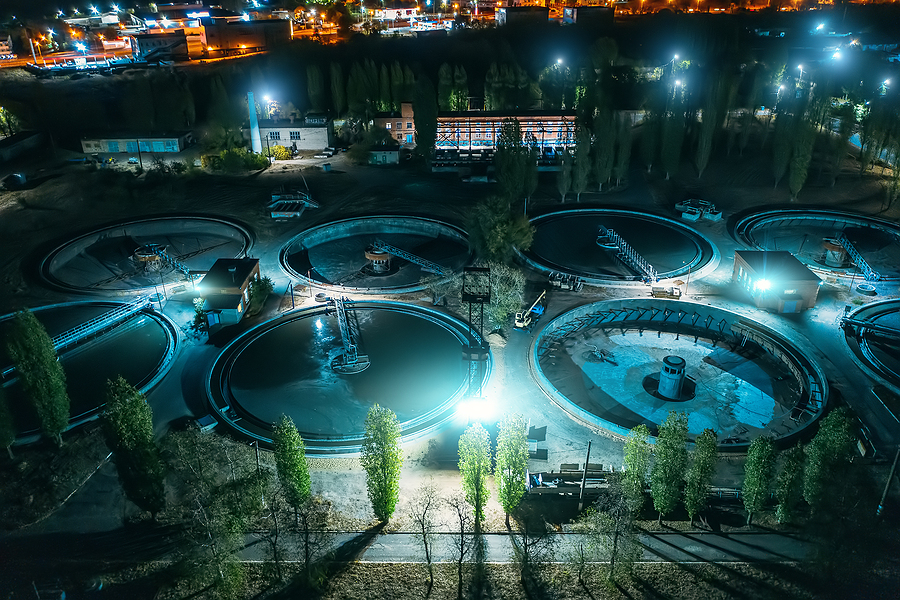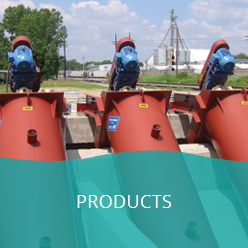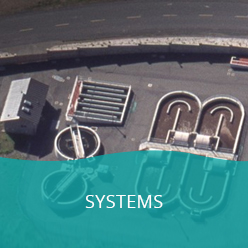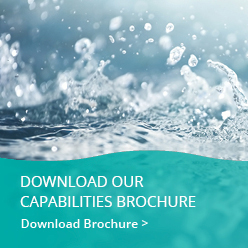A statistic published by the United Nations says that 55% of the world’s population currently lives in urban areas, and that this is expected to grow to 68% by the year 2050. Cities around the world are experiencing growth at rates higher than in years past, presenting new challenges for wastewater treatment.
The wastewater treatment industry is faced with keeping up with the pace of expanding populations, which requires a combination of innovative solutions, strategic planning, and new technological advancements that safeguard the environment and public health.
Let’s take a look at the key challenges of urban expansion on wastewater treatment and the solutions that will help the industry succeed.
The Growing Urban Wastewater Crisis
The growing demographic shift to urban areas is placing significant strain on existing wastewater infrastructure. Much of the current infrastructure that is in place was designed and built decades ago, when populations were less than they are today, and without consideration of the potential growth trajectory in the future.
This makes it increasingly challenging for current wastewater treatment facilities to handle not only the current load, but also to scale for the anticipated growth.
The consequences of not meeting these challenges are far-reaching. Public health, the environment, and the economic impact are all critical concerns. Many wastewater treatment facilities are equipped with aging systems that struggle to handle the increased volume of growing populations, while meeting newer, stricter environmental regulations.
Here are the key challenges that urban growth is placing on today’s wastewater treatment centers.
Key Challenges in Urban Wastewater Treatment
Capacity Constraints
Most wastewater treatment centers are currently operating at or near their maximum capacity, especially during peak flow events. When facilities reach their capacity constraints, the potential for bottlenecks in the treatment process increases, which also increases the risk of system failures and overflows.
The challenge here is not only expanding capacity, but achieving adequate expansion in crowded urban areas. It’s also difficult to maintain typical operations during an expansion, which presents a set of new challenges on its own.
Aging Infrastructure
The existing wastewater treatment infrastructure in many cities is already reaching or exceeding its maximum lifespan. Issues such as deterioration in pipes, failing equipment, and outdated treatment technologies can lead to lower efficiency rates across the board, as well as increased maintenance costs.
As wastewater treatment facilities are considering how and when to update their infrastructure, they’re also facing even greater costs of updating to a level that can handle the rapid urban growth.
Environmental Compliance
As urban areas continue to grow, we’re seeing environmental regulations become more strict, requiring treatment facilities to achieve higher levels of effluent quality. For wastewater treatment facilities, especially smaller operations, meeting these requirements while handling increased volumes comes with both operational and technical challenges.
The solution involves implementing advanced treatment processes that can be utilized to handle higher volumes of treatment, without significantly increasing either the overall operational costs or energy consumption. This is a balance that treatment facilities in growing areas must work to find solutions that are beneficial both for effluent quality and the conservation of resources, including money.
Solutions for Modern Wastewater Treatment Challenges
Urban growth isn’t going to slow down any time soon, which means we need to look at solutions that work for wastewater treatment plants of all sizes.
Smart Technology to the Rescue
Smart technology is one solution that can help prevent bottlenecks and reduce overall operational costs. For example, installing real-time monitoring systems or using predictive maintenance algorithms enables facilities to monitor system performance continuously and predict when equipment could be stressed to the point of needing repair or upgrade.
Smart technology in wastewater treatment can also help facilities optimize chemical usage and energy consumption, which is important as facilities are learning to adapt to increased demands.
Sustainable Design Approaches
Today, wastewater treatment facilities are considering how they can incorporate sustainable design to reduce operation costs and the environmental impact of treatment. Depending on the size of the facility and the type of wastewater it treats, this can happen in a few different ways.
It could look like upgrading to energy efficient equipment and processes, especially for mid-size to larger operations that can quickly recover the costs due to resource and cost savings.
Other approaches that are both sustainable and friendly toward urban growth include biogas generation and anaerobic digestion as a treatment option, reduced dependence on chemical treatment by adopting biological treatment processes, and the integration of more green infrastructure as facilities update or upgrade their equipment.
Strategic Planning for Future Urban Growth
As urban areas expand, wastewater treatment facilities need to adjust and integrate into their surrounding communities with minimal disruption. This means taking steps to minimize any potential odor or noise impacts on the surrounding community, for starters, but it also involves becoming active members of the community they’re in.
This is a great opportunity for wastewater treatment centers to become involved and establish themselves as valuable assets for the community. For example, developing or contributing to local environmental initiatives and creating educational opportunities, especially in the area of sustainability, can help build a more positive image for facilities.
As the need for growth becomes a more pressing issue, facility managers can assess how to do so with minimal disruption to ongoing operations. A phased approach that begins with a comprehensive assessment of the current system capacity and performance is a necessary starting point, combined with future growth projections.
Working with an experienced provider of wastewater treatment equipment is a way for facility operators to better understand the available technologies and solutions. An experienced provider can also suggest the most advanced equipment options while considering budget constraints or available funding options.
There are multiple cost-effective solutions available that can provide a higher long-term return and benefits.
Future Proofing Urban Wastewater Treatment
As the industry adapts to urban growth, the next challenge is looking at what wastewater treatment can do to future-proof itself and more easily adapt to increasing demands.
The first area to consider is resilient design. This involves building wastewater treatment systems that are designed with features that meet the needs of the future.
Resilient design for tomorrow includes adaptations for climate change, flexible treatment capabilities that can handle the ebbs and flows of volume, sustainable resource management, and emergency response plans for both operational and natural emergencies.
This is also the time to look at innovation and how new technologies can be integrated into both existing and new or updated treatment facilities. This involves staying up to date and evaluating new technologies for their fit in current wastewater treatment processes, as well as pilot testing new solutions that show promise for the future.
Additional initiatives, such as collaborations with industry partners to build stronger wastewater treatment systems together and continuous improvement programs, can also play a significant role in helping the industry adapt to urban expansion.
Final Thoughts
Successfully addressing wastewater treatment challenges in expanding urban areas requires a multi-tiered approach that involves strategy, innovation, sustainability, and the flexibility to adapt. By implementing solutions today and planning for tomorrow, the wastewater treatment industry can move forward, helping cities develop wastewater treatment infrastructure that meets demands, keeps communities safe, and protects the environment.
At Lakeside Equipment, we’re here to be your partner in wastewater treatment innovation. Contact us today to learn more about our equipment and services to assist the changing needs of your facility. Our experienced staff is available to answer your questions and help you develop a growth strategy to take your facility into the future.








